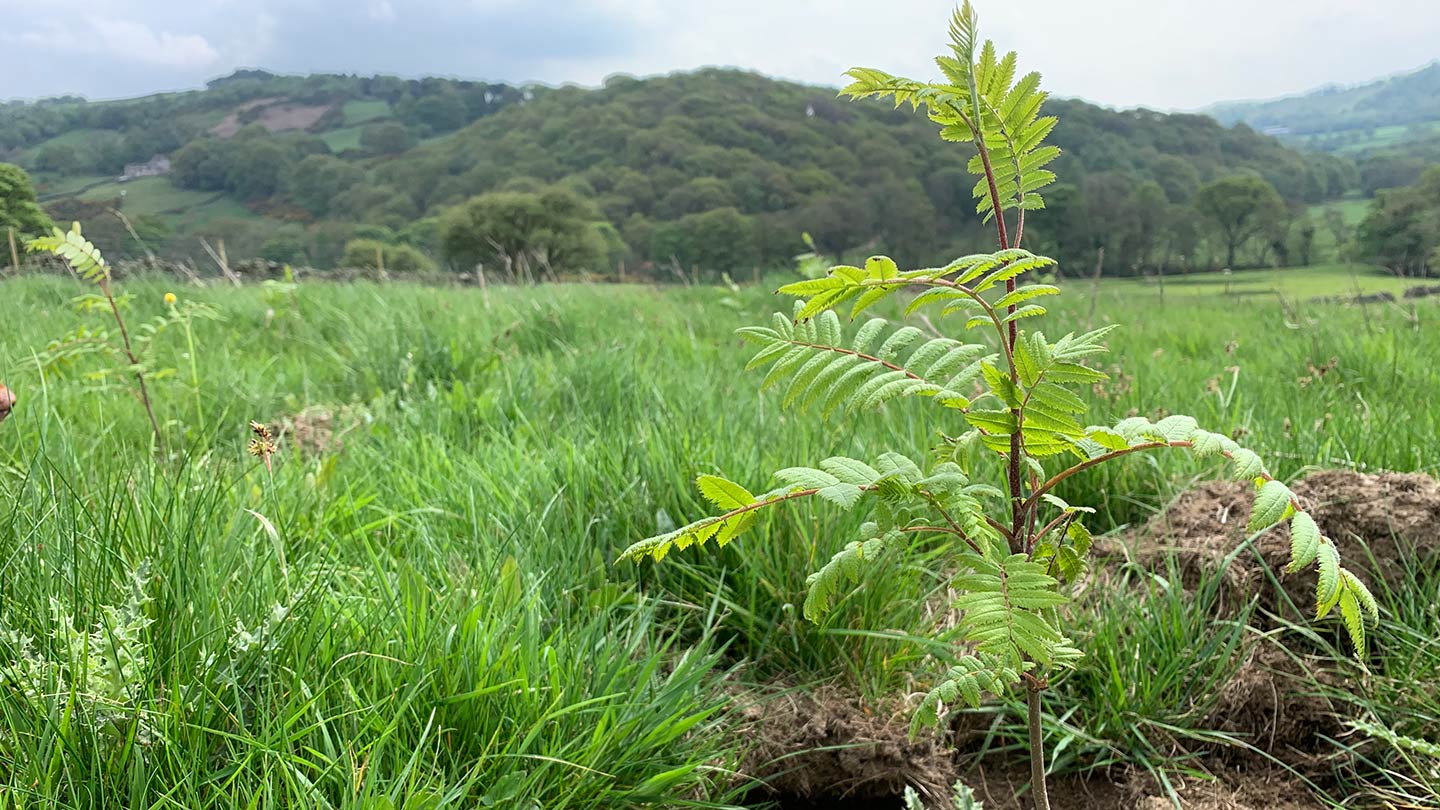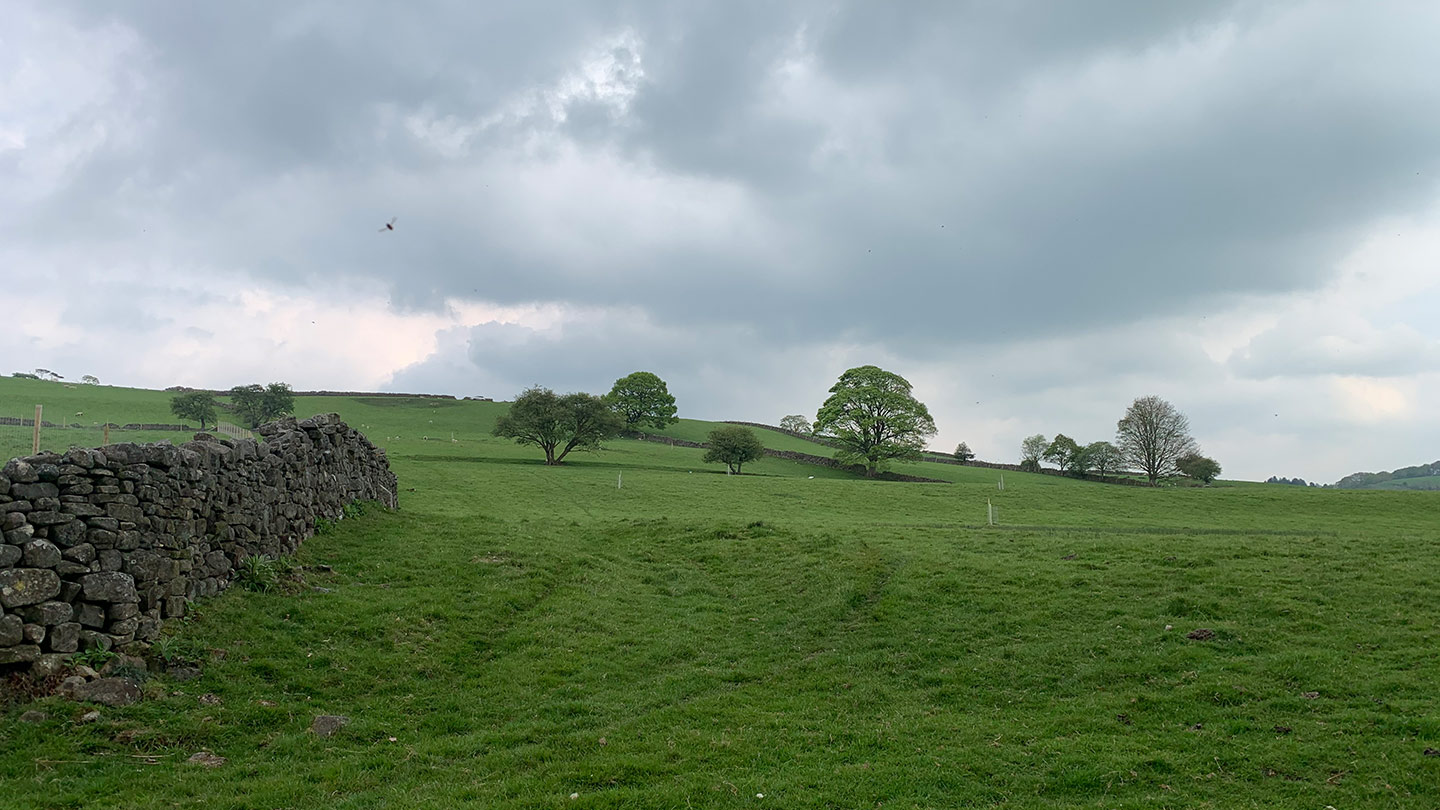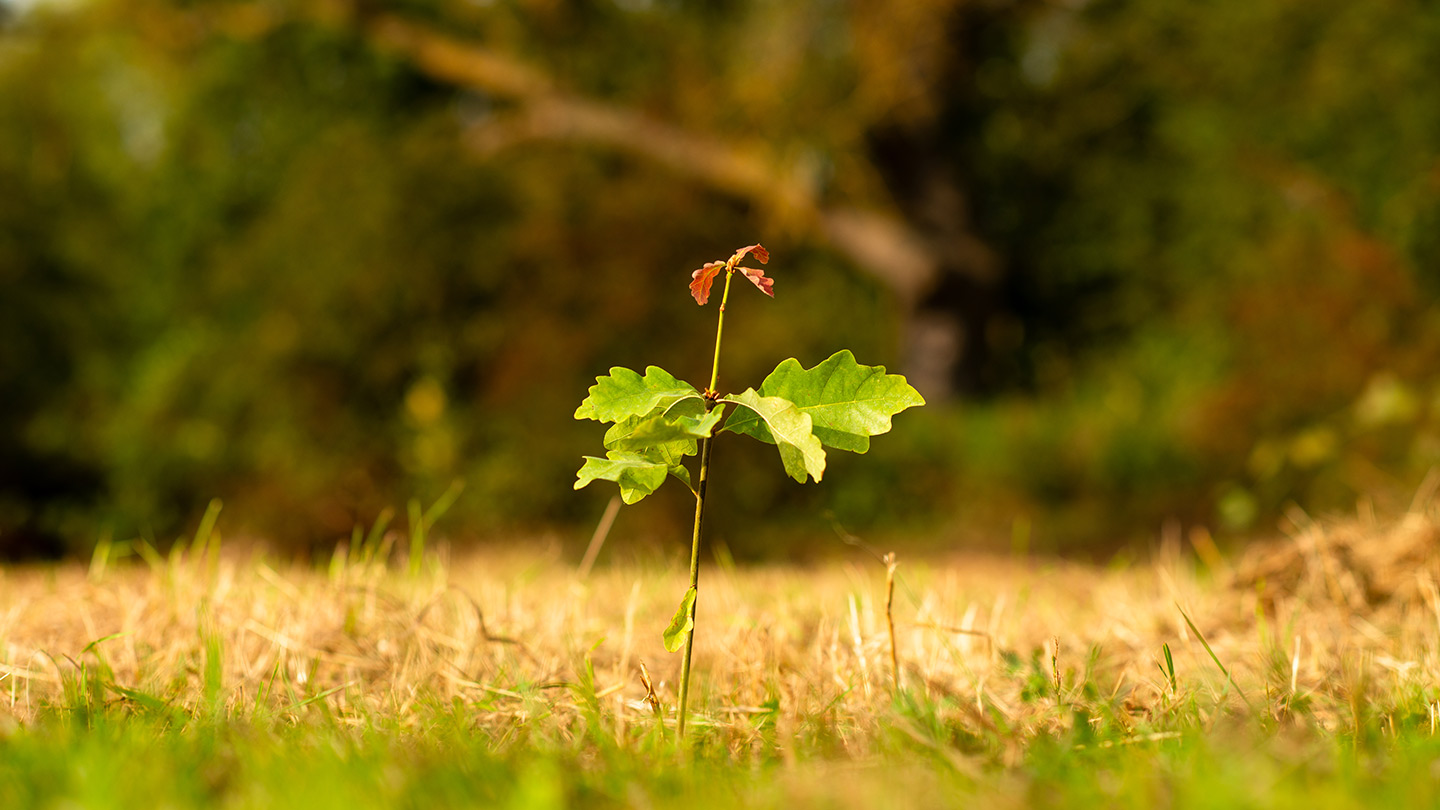Nether Timble Farm: creating space for nature
In late 2021, the landowners of Nether Timble Farm, located near the Swinsty and Fewston reservoirs in North Yorkshire, approached the Woodland Trust to explore ways of getting more trees onto the farm and into the local landscape. They really wanted to create more space for nature and explore the ways that they could incorporate trees into their working farm as sustainably as possible – particularly by minimising the use of plastic tree guards.
Site assessment and planning
The Woodland Trust assessed the whole farm for its potential for more trees. This included hedgerows, individual trees outside of woodland settings (such as wood pasture), and areas suitable for larger woodland creation. After reviewing the options, the landowners chose to focus on the southern part of their land – where newly-wooded areas could extend into a large area of existing ancient woodland. This fitted well with the organisation’s aim to extend and buffer existing ancient woodlands.

A newly-planted rowan sapling at Nether Timble Farm. Credit: Alasdair Fagan / WTML
Throughout the process, the Woodland Trust’s outreach advisor provided guidance. This included liaising with Natural England, the Forestry Commission and local councils to make sure the right trees were planted in the right places. The Grow Back Greener grant scheme covered all project costs.
Planting by design
The final design covered a total area of 3.67 hectares.
Natural regeneration
A 1.54-hectare area near to the ancient woodland fragment was left to naturally regenerate.
High-density planting
An area of 1.83 hectares was fenced to protect new saplings from deer, rabbits and hares. Here, 3,000 native trees were planted at an artificially high density that, along with the fencing, removed the need for plastic guards. The fencing was erected and volunteers from Yorgreen CIC planted the trees in early 2024.
Wood pasture planting
The Trust provided the landowners with trees, tree shelters and cactus guards to create an extra 2.36ha of low-density wood pasture. Individual large trees and some scrub were planted together in guards with external spikes to prevent them from being damaged by sheep or cattle.

Wood pasture at Nether Timble Farm. Credit: Alasdair Fagan / WTML
Impacts of natural regeneration
Allowing an area to naturally regenerate meant that sheep were no longer allowed to take shelter in the small ancient woodland fragment that the new woodland buffered. Removing the extensive grazing pressure in the woodland resulted in carpets of bluebells and foxgloves flourishing in spring 2024. These naturally regenerated areas are expected to provide habitats for a wide range of flora and fauna as they mature.
Leading by example
Nether Timble Farm demonstrates how woodland creation can integrate seamlessly into a working farm. By prioritising sustainability, reducing plastic use, extending ancient woodlands and focusing on biodiversity, the project shows how we can build resilient landscapes for the future.
Be part of the Northern Forest
Want to plant trees? Whether you’re creating new woodland or extending an existing site, you can reap a whole host of extra benefits.
- Boost biodiversity.
- Provide shelter.
- Protect your soil.
- Fight flooding
Your new trees could be part of the Northern Forest and make a difference for people, wildlife and the environment in the North of England.

Credit: Phil Formby / WTML
Get started today
Speak to an expert adviser from any Northern Forest partner for no obligation advice and support.